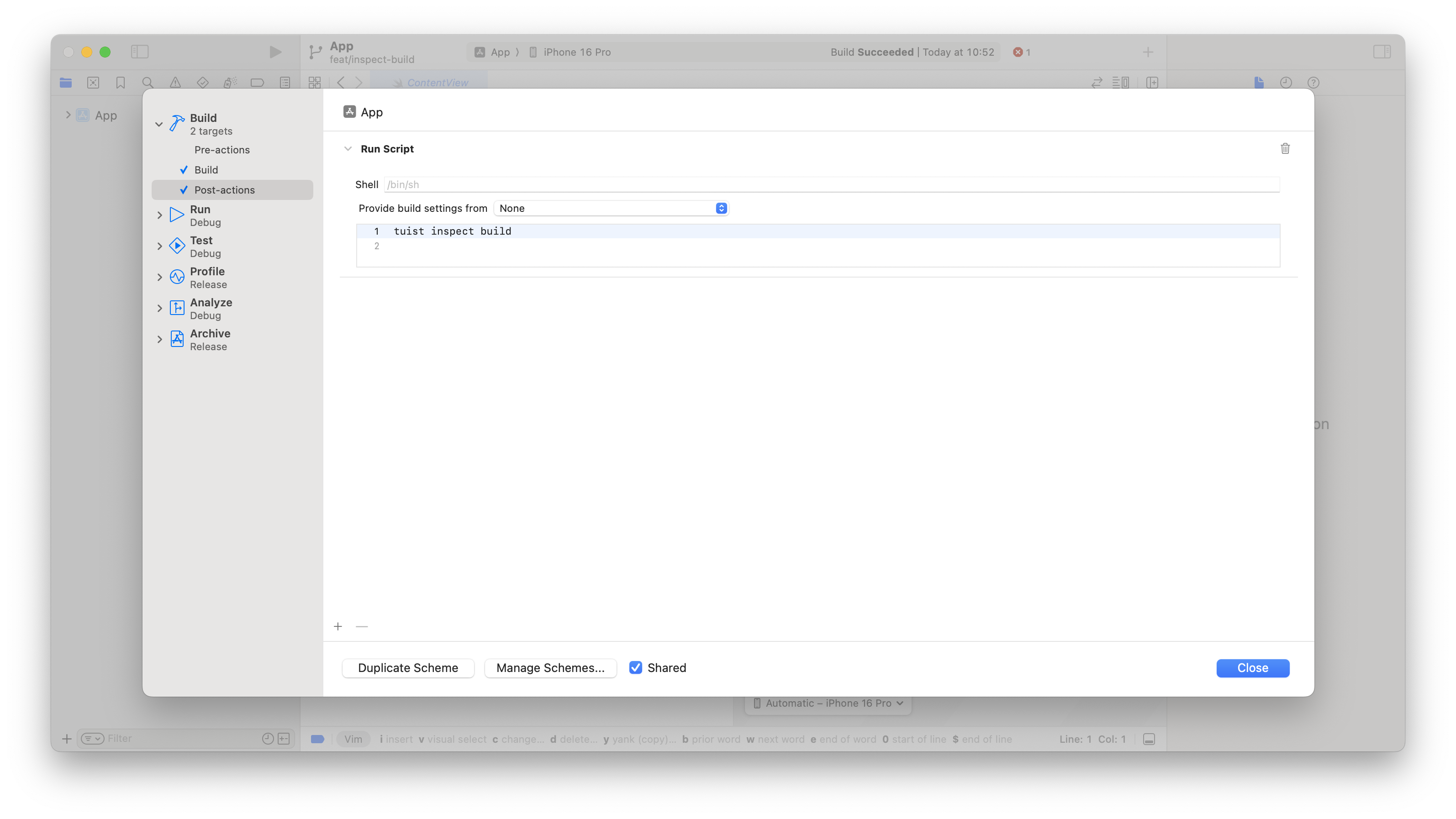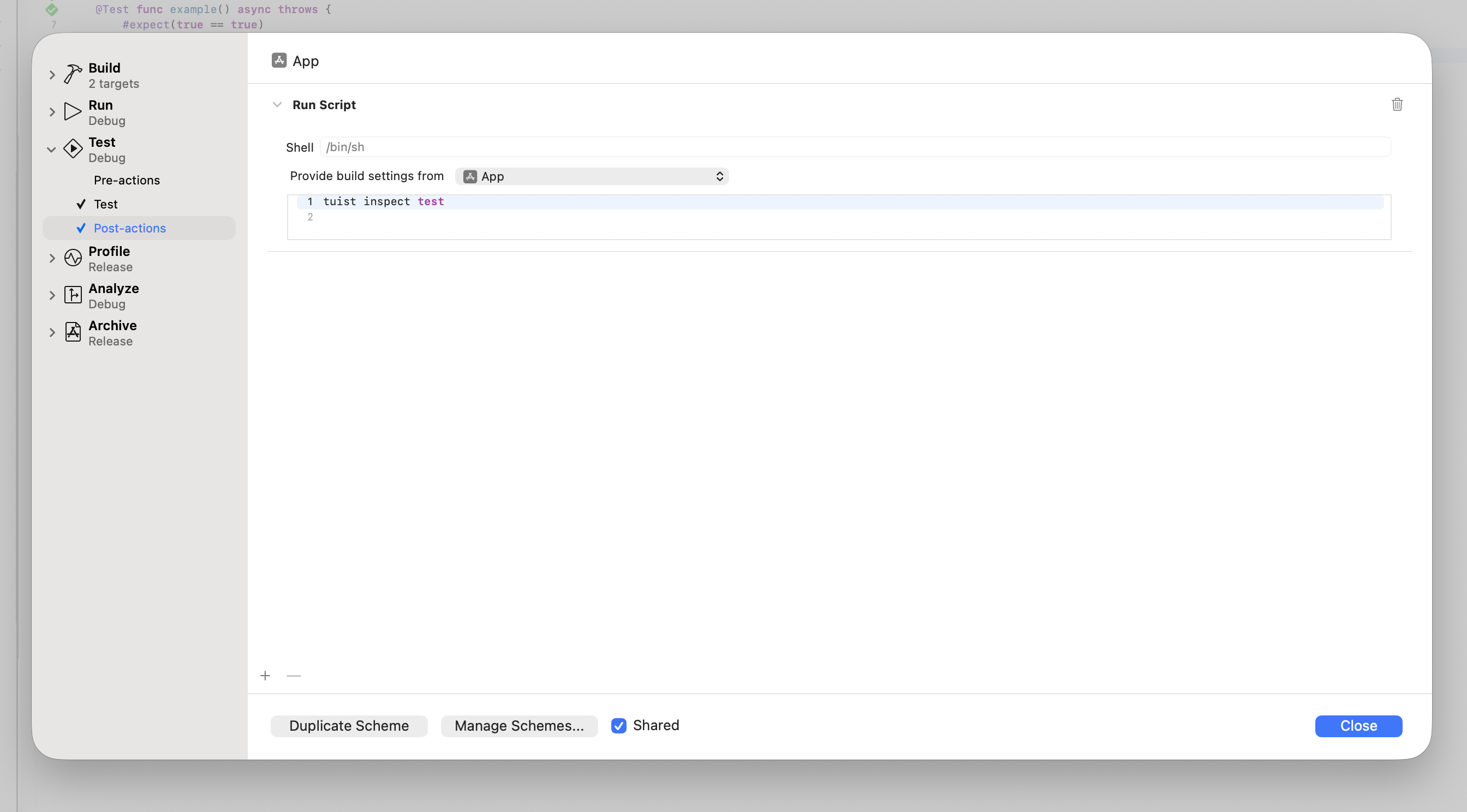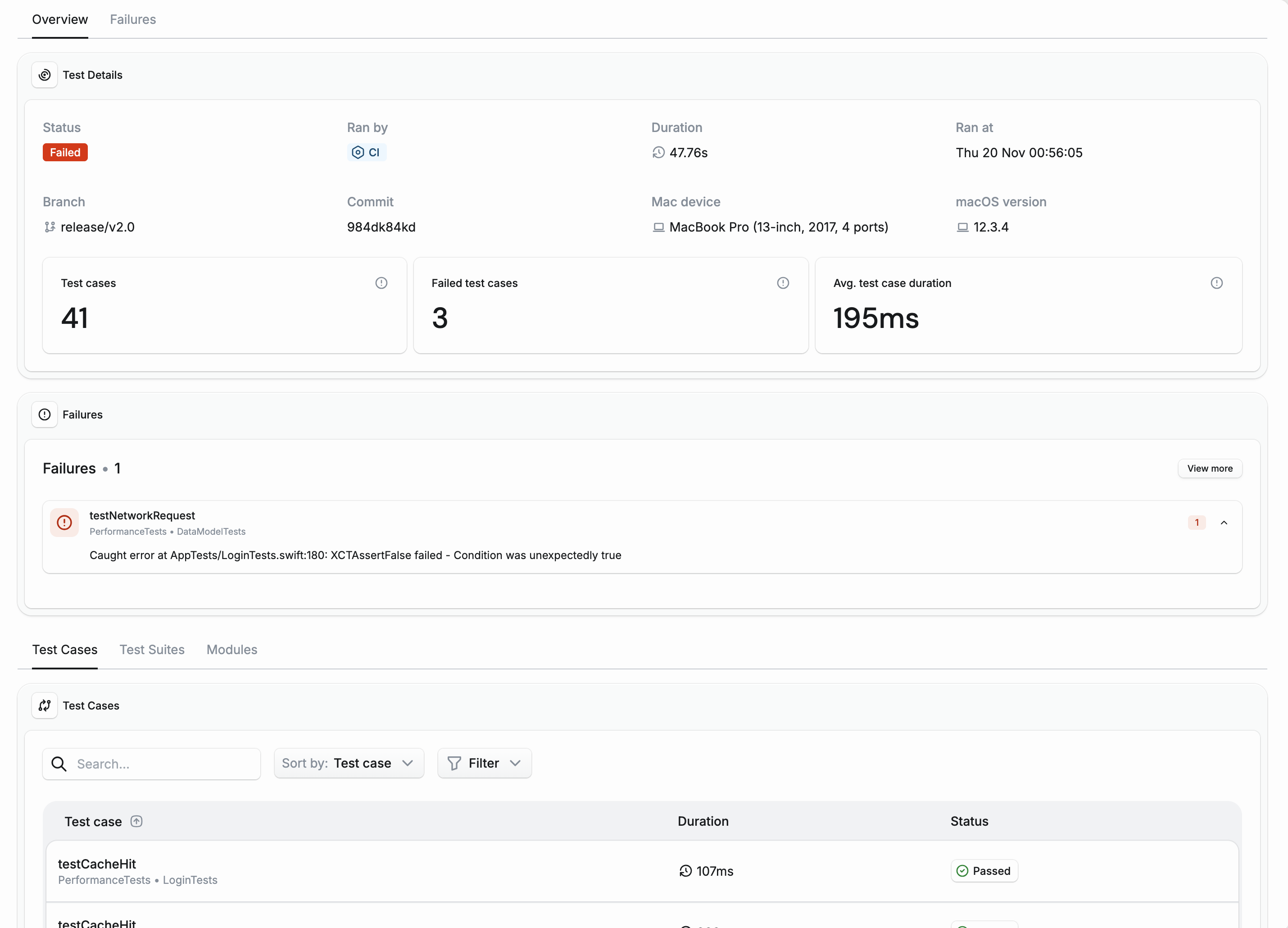Insights
REQUIREMENTS
Working on large projects shouldn't feel like a chore. In fact, it should be as enjoyable as working on a project you started just two weeks ago. One of the reasons it is not is because as the project grows, the developer experience suffers. The build times increase and tests become slow and flaky. It's often easy to overlook these issues until it gets to a point where they become unbearable – however, at that point, it's difficult to address them. Tuist Insights provides you with the tools to monitor the health of your project and maintain a productive developer environment as your project scales.
In other words, Tuist Insights helps you to answer questions such as:
- Has the build time significantly increased in the last week?
- Have my tests become slower? Which ones?
INFO
Tuist Insights are in early development.
Builds
While you probably have some metrics for the performance of CI workflows, you might not have the same visibility into the local development environment. However, local build times are one of the most important factors that contribute to the developer experience.
To start tracking local build times, you can leverage the tuist inspect build command by adding it to your scheme's post-action:

INFO
We recommend setting the "Provide build settings from" to the executable or your main build target to enable Tuist to track the build configuration.
INFO
If you are not using generated projects, the post-scheme action is not executed in case the build fails.
An undocumented feature in Xcode allows you to execute it even in this case. Set the attribute
runPostActionsOnFailuretoYESin your scheme'sBuildActionin the relevantproject.pbxprojfile as follows:diff<BuildAction buildImplicitDependencies="YES" parallelizeBuildables="YES" + runPostActionsOnFailure="YES">
In case you're using Mise, your script will need to activate tuist in the post-action environment:
# -C ensures that Mise loads the configuration from the Mise configuration
# file in the project's root directory.
$HOME/.local/bin/mise x -C $SRCROOT -- tuist inspect buildMISE & PROJECT PATHS
Your environment's PATH environment variable is not inherited by the scheme post action, and therefore you have to use Mise's absolute path, which will depend on how you installed Mise. Moreover, don't forget to inherit the build settings from a target in your project such that you can run Mise from the directory pointed to by $SRCROOT.
Your local builds are now tracked as long as you are logged in to your Tuist account. You can now access your build times in the Tuist dashboard and see how they evolve over time:
TIP
To quickly access the dashboard, run tuist project show --web from the CLI.

Tests
In addition to tracking builds, you can also monitor your tests. Test insights help you identify slow tests or quickly understand failed CI runs.
To start tracking your tests, you can leverage the tuist inspect test command by adding it to your scheme's test post-action:

In case you're using Mise, your script will need to activate tuist in the post-action environment:
# -C ensures that Mise loads the configuration from the Mise configuration
# file in the project's root directory.
$HOME/.local/bin/mise x -C $SRCROOT -- tuist inspect testMISE & PROJECT PATHS
Your environment's PATH environment variable is not inherited by the scheme post action, and therefore you have to use Mise's absolute path, which will depend on how you installed Mise. Moreover, don't forget to inherit the build settings from a target in your project such that you can run Mise from the directory pointed to by $SRCROOT.
Your test runs are now tracked as long as you are logged in to your Tuist account. You can access your test insights in the Tuist dashboard and see how they evolve over time:

Apart from overall trends, you can also dive deep into each individual test, such as when debugging failures or slow tests on the CI:

Generated projects
INFO
Auto-generated schemes automatically include both tuist inspect build and tuist inspect test post-actions.
If you are not interested in tracking insights in your auto-generated schemes, disable them using the
buildInsightsDisabledand
testInsightsDisabledgeneration options.
If you are using generated projects with custom schemes, you can set up post-actions for both build and test insights:
let project = Project(
name: "MyProject",
targets: [
// Your targets
],
schemes: [
.scheme(
name: "MyApp",
shared: true,
buildAction: .buildAction(
targets: ["MyApp"],
postActions: [
// Build insights: Track build times and performance
.executionAction(
title: "Inspect Build",
scriptText: """
$HOME/.local/bin/mise x -C $SRCROOT -- tuist inspect build
""",
target: "MyApp"
)
],
// Run build post-actions even if the build fails
runPostActionsOnFailure: true
),
testAction: .testAction(
targets: ["MyAppTests"],
postActions: [
// Test insights: Track test duration and flakiness
.executionAction(
title: "Inspect Test",
scriptText: """
$HOME/.local/bin/mise x -C $SRCROOT -- tuist inspect test
""",
target: "MyAppTests"
)
]
),
runAction: .runAction(configuration: "Debug")
)
]
)If you're not using Mise, your scripts can be simplified to:
buildAction: .buildAction(
targets: ["MyApp"],
postActions: [
.executionAction(
title: "Inspect Build",
scriptText: "tuist inspect build",
target: "MyApp"
)
],
runPostActionsOnFailure: true
),
testAction: .testAction(
targets: ["MyAppTests"],
postActions: [
.executionAction(
title: "Inspect Test",
scriptText: "tuist inspect test"
)
]
)Continuous integration
To track build and test insights on CI, you will need to ensure that your CI is
authenticated.Additionally, you will either need to:
- Use the
tuist xcodebuildcommand when invokingxcodebuildactions. - Add
-resultBundlePathto yourxcodebuildinvocation.
When xcodebuild builds or tests your project without -resultBundlePath, the required activity log and result bundle files are not generated. Both tuist inspect build and tuist inspect test post-actions require these files to analyze your builds and tests.
